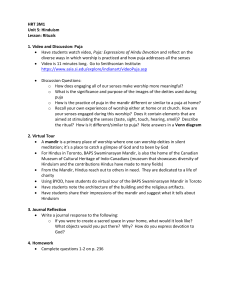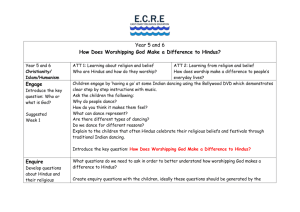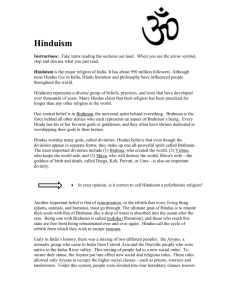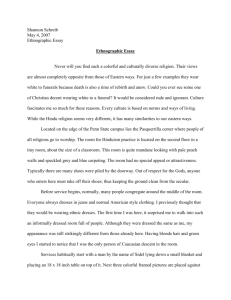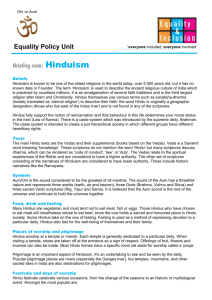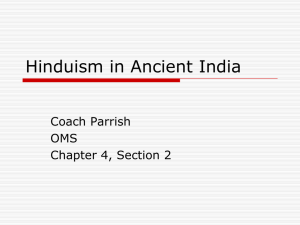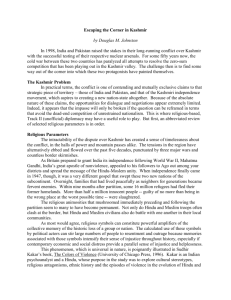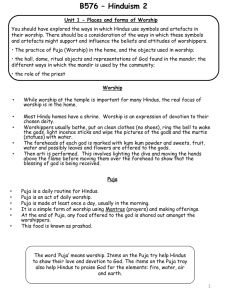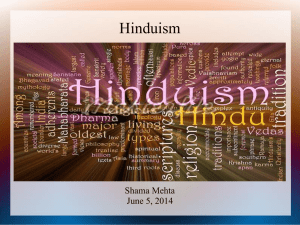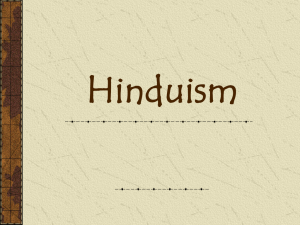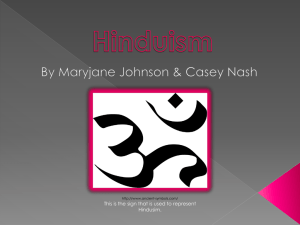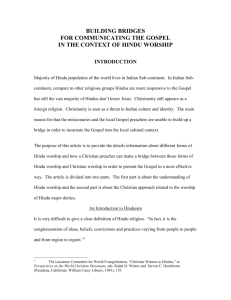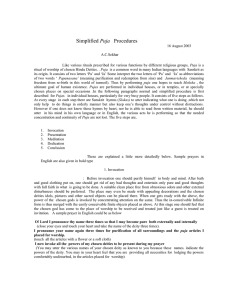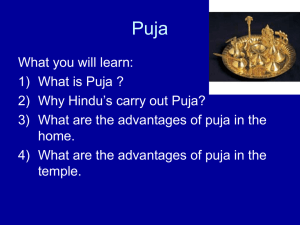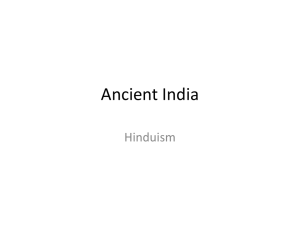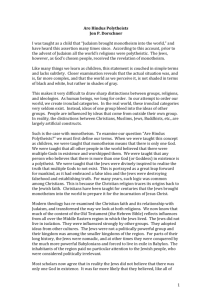Document
advertisement
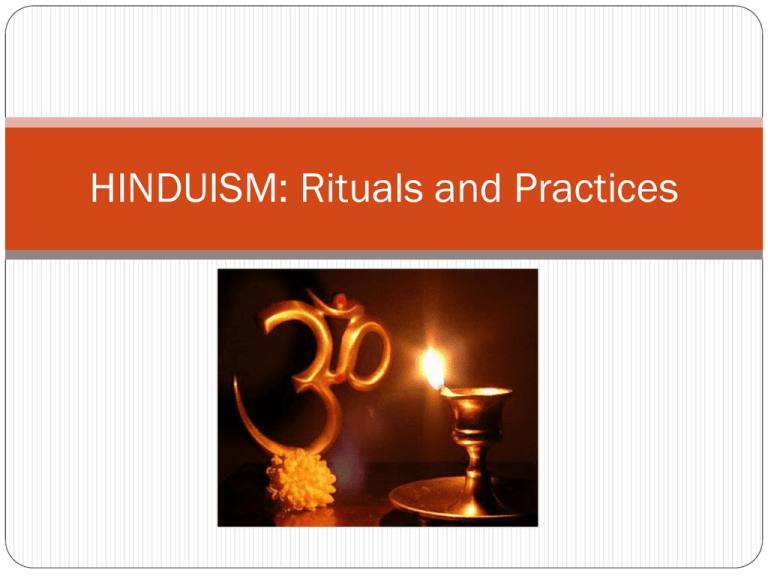
HINDUISM: Rituals and Practices RITUALS A Hindu lives his or her religion through worship rituals passed down from one generation to the next Daily worship takes place at home and going to temple is not absolutely necessary Many Hindus begin their day with rituals- others in evenings or on weekends Most Hindus purify themselves before participating in ritual Om This syllable is made up of three sounds a-u-m. Used to evoke essence of Brahman. Believed to contain the secrets of the universe and is chanted at the beginning of prayers, blessings, and meditation. The symbol is not worshipped but meditated on as a means to gain enlightenment. Mantras Mantras are scared phrases that worshippers repeat. Example- Hindus chant this mantra to greet the sun: “I meditate on the brilliance of the sun; may it illuminate my intellect.” Worship at Home Images used at home during worship act as points of focus to help the mind concentrate on the abstract ideals that the deities represent. The most common form of home worship is called puja. There are 16 steps in a traditional puja. Watch the video and fill in the blanks! How to Have a Puja at Home Howcast “How to Have a Puja at Home” Worship in Temples Worshipping in temples is not a requirement nor a necessity Hindus usually visit temples on festivals or for special functions Worship in a temple is conducted by a priest and his helpers Images of deities in temple are treated like royalty Hindus in the West also go to temple to learn more about their religion Hindu Mandir, Toronto Significance of the Cow The cow is considered to be sacred to their culture and beliefs Hindus adore the cow as a manifestation of all that is good and precious. The aspire to a vegetarian lifestyle, like the cow. Yoga and Meditation To Hindus, yoga and meditation are spiritual disciplines Meditation requires a sitting posture which is comfortable for long periods of time. Meditators try to control their breathing and focus on a single object, sound, or idea until they are experiencing divine presence. Swamis, holy men, are experts at meditation. Pilgrimages Varanasi, a city located along the bank of the Ganges river, is a holy city for Hindus They try to visit at least once in their lives Bathing in the river is the first thing pilgrims do when they arrive. They believe it cleanses them of sin. Symbols Symbols are an important part of Hinduism They serve as reminder of the divine spirit. The Swastika is a good luck symbol representing “well- being”. Used to protect against evil and bring luck. Commonly seen on Hindu drawings or wedding invitations. Forehead Marks Some Hindus mark a tilak on their forehead to indicate which deity they worship. Signs are worn between eyes, to represent third eye of wisdom Many married women mark their foreheads with a red dot called a bindi. This signifies a woman is married. If time.. Finish p.127 #1,2 from yesterday Make notes on “Women in Hinduism” on p.128

